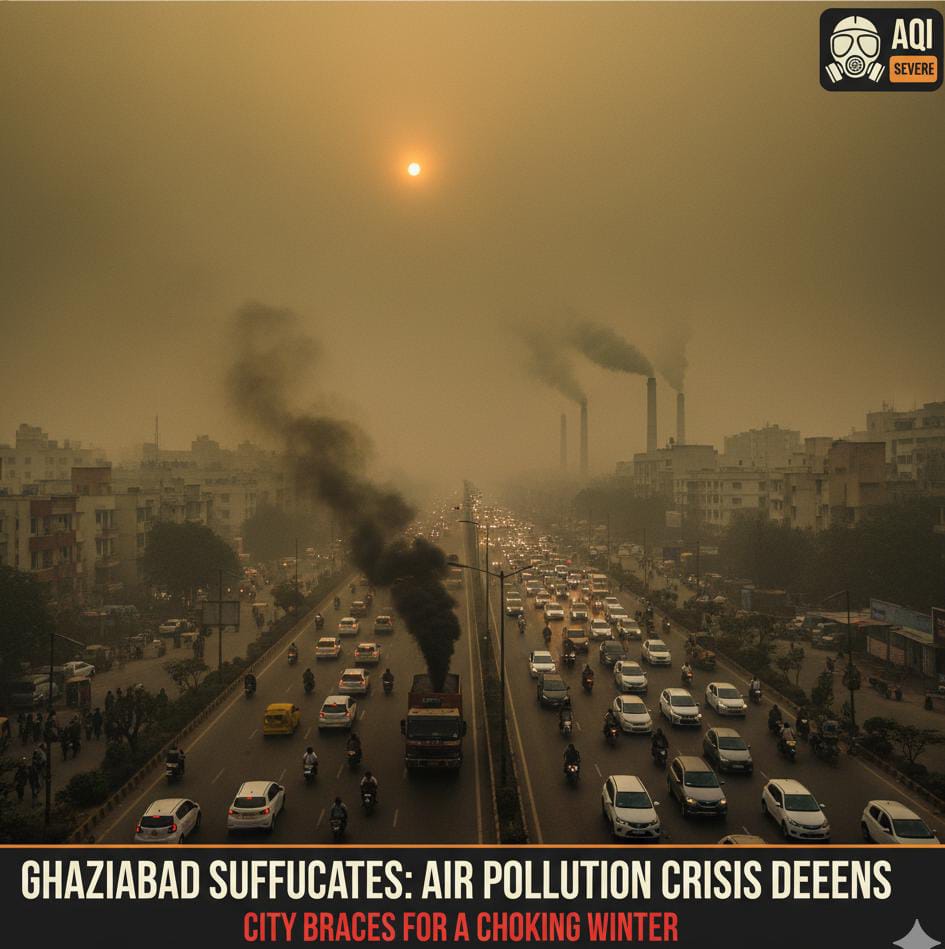
The air over Ghaziabad is no longer breathable; it's a toxic cocktail. As the winter season approaches, the city finds itself on the precipice of an environmental and public health crisis, with pollution levels soaring and the region bracing for a prolonged period of severe air quality. The situation is dire, underscored by the recent 24-hour average Air Quality Index (AQI) of 294, placing the city firmly in the "Poor" category, a dangerous threshold that signifies clear health risks for the general populace.
The figures from the Central Pollution Control Board (CPCB) are very eye opening for the citizens. Data shows that the city's air has consistently worsened over the past week, following a troubling trend from "Moderate" to "Poor." While the current AQI of 294 is worrisome, meteorological conditions suggest an imminent and catastrophic escalation. The low wind velocity, a hallmark of the transition to winter, acts as a lid, trapping pollutants close to the ground. Experts predict that in the coming days, Ghaziabad’s air quality will likely plunge into the "Very Poor" category, and potentially even the "Severe" category, where every breath poses a serious health hazard.
The Cocktail of Contaminants
The toxic mix plaguing Ghaziabad is the result of a confluence of local emissions and seasonal factors. The primary culprits are well-identified:
Industrial Emissions and Vehicular Exhaust: Ghaziabad’s status as a major industrial hub and a critical thoroughfare for road traffic contributes heavily to the load of Particulate Matter (PM). The concentration of ultrafine particles, specifically “PM2.5 and PM10” remains alarmingly high, penetrating deep into the lungs and bloodstream.
Trans-boundary Pollution and Stubble Burning: While local emissions are constant, the seasonal factor of crop residue burning in neighbouring states significantly worsens the situation. The resulting plumes of smoke are carried by wind currents, thickening the haze and contributing to the suffocating AQI numbers.
Construction and Road Dust: Despite regulations, a large volume of construction and road repair work continues unabated. The dust generated from these activities adds substantial amounts of coarse particulate matter to the atmosphere, a problem compounded by the poor condition of many roads.
The Festive Flare-Up: The looming festival season, with its inevitable use of firecrackers, is expected to deliver the final, devastating blow. The emissions from fireworks will spike pollution levels dramatically, potentially pushing the region into the "Severe" category within days of the celebrations.
A Public Health Emergency
The air pollution in Ghaziabad is not merely an inconvenience; it is a silent as well as mass-casualty event unfolding slowly. Residents, especially children, the elderly, and those with pre-existing respiratory and cardiovascular conditions, are facing an acute public health emergency. Exposure to this level of toxicity leads to a host of ailments: chronic bronchitis, asthma attacks, heart disease, and in the long term, increased risks of various cancers.
Hospitals are already reporting a noticeable increase in patients presenting with respiratory distress. Doctors are issuing stark warnings: "Staying indoors offers only marginal protection. The only real remedy is a comprehensive, multi-sectoral strategy to reduce emissions at the source," says a prominent chest specialist at a local hospital.
Inadequate Action and the Need for Urgency
While authorities have taken sporadic measures, including temporary bans on firecrackers and attempts at traffic rationalization, the efforts appear wholly insufficient against the scale of the challenge. The city’s administration must move beyond seasonal reactive measures and implement a stringent and sustained plan.


.jpeg)





.jpeg)



.jpeg)


.jpeg)
.jpeg)
.jpeg)


